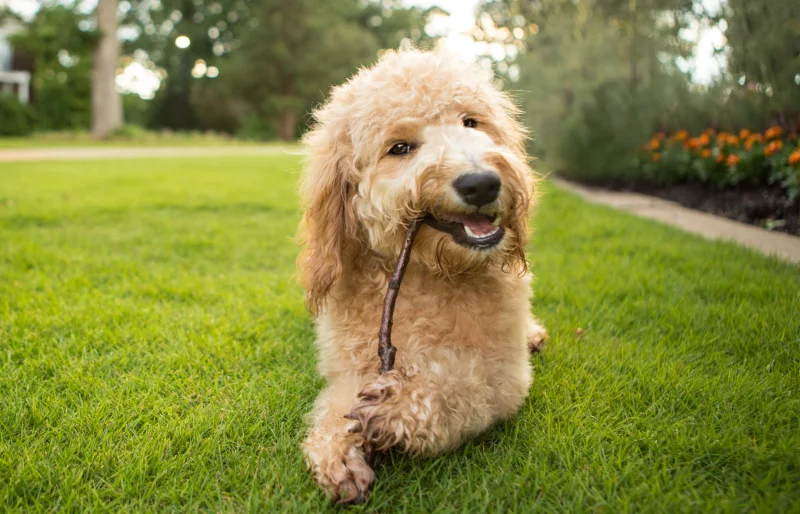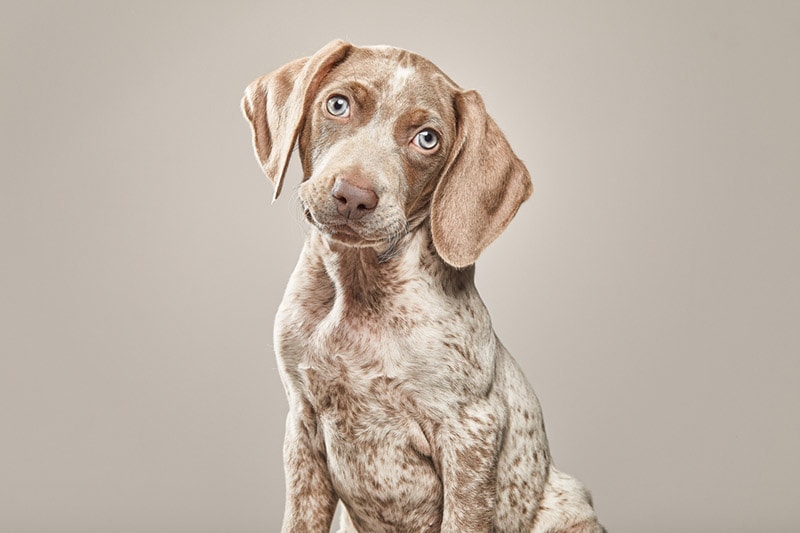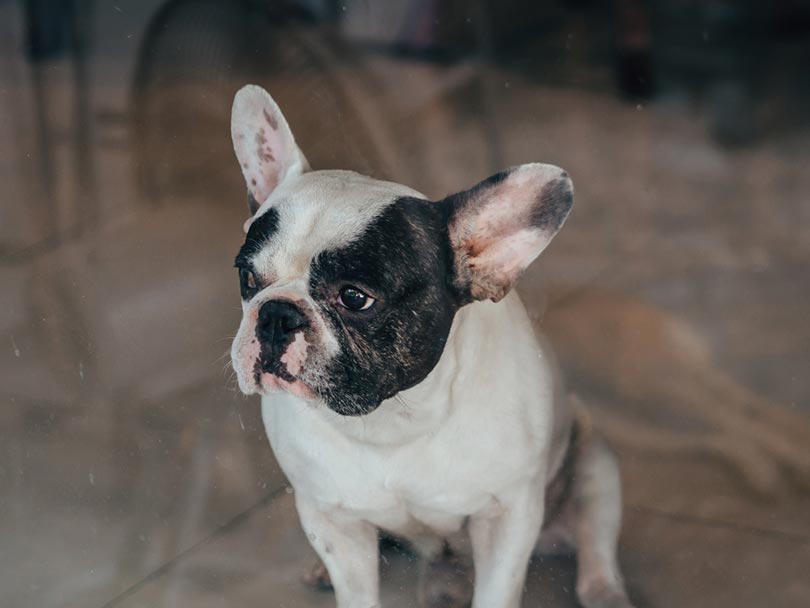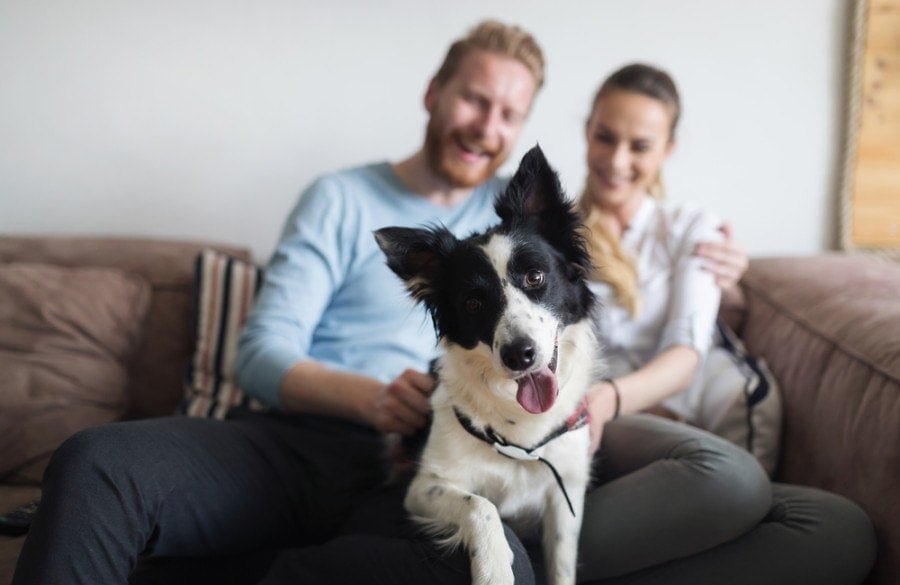Dog Eating Sticks: Vet Reviewed Reasons of this Behavior, Risks & Care Tips
Updated on

A dog playing with or eating a stick seems like a fitting image. Many dogs love sticks. They are fun and enticing to them, as well as natural, so they seem to smell and taste good to our furry friends as well. It is not uncommon to find your dog playing in the park, only to discover them to be proudly chewing on a stick.
This may appear to be a fun and harmless activity for them to do, and many pet parents let their dogs munch away on them. After all, they are enjoying themselves, so what’s the harm in it? Unfortunately, there is quite a bit of harm that can occur, and letting your dog eat sticks is not a good idea or recommended. Multiple accidents and injuries can occur from dogs eating sticks. The stick being a choking hazard and causing problematic internal or external splinters, for example, are putting your dog at risk.
Why Do Dogs Eat Sticks?
Why are sticks so enticing to dogs? Surely, they don’t smell and taste as good as a Sunday roast or a side of salmon.
The truth is there are indeed several legitimate reasons to explain your dog’s love of eating sticks and twigs. Listed below are the most common reasons, and you might immediately notice the one that fits your dog, or maybe there are a few you relate to.
- The stick simply tastes and smells good to them. This can be due to either food being dropped or coated on it, unmentionable dog smells they find divine being on the stick’s surface, or other animals’ scents. Even poop from foxes or birds on a stick, for example, is enough to draw a dog in.
- It is a natural and normal instinct to chew, and they are simply carrying out this behavior.
- The stick itself or its surrounding leaves can be rotting, making the stick seemingly smell attractive to them.
- Teething puppies want to chew.
- A condition called pica. This is the eating of unusual foods and substances; wood and sticks would be examples. This is often a sign of another illness or underlying health condition and will require a quick check by your vet to ensure all is in order.

Is It Safe for a Dog to Chew on a Stick?
While you don’t want to be a killjoy in your dog’s life, unfortunately, it is not safe for them to chew on sticks. Ideally, you need to remove the stick as soon as you notice them eating or playing with it. Try to replace it with a different toy, a game, a treat, or some other distraction to ease their disappointment. What they don’t understand is that you are protecting them from several nasty incidents that can easily result from chewing on and eating sticks. These include but are not limited to:
- Parts of the stick can break off and become wedged at the back of the throat, creating a blockageand choking your dog.
- Small pieces of wood can become trapped in between the teeth, across the roof of the mouth, in the gums, and under the tongue.
- Perforating injuries and infections in the mouth.
- Eye injuries or infections.
- Splinters from the wood can affect any part of the mouth or the gastrointestinal tract.
- Swallowed pieces of wood can also splinter and break off, risking any part of the digestive tract becoming pierced, cut, or retaining a splinter. Any of these situations can lead to infection and serious internal issues, such as peritonitis.
- Swallowed pieces of wood can cause blockages in the gastrointestinal tract.
- Toxicity risk. This is perhaps a small chance of occurrence, but should a toxic substance be on the wood, then poisoning also remains a real risk to your dog.
What Happens if My Dog Eats a Stick?
Should your dog eat a stick, particularly if they have swallowed parts of it, any of the above risks and potential problems mentioned could occur. The largest concern is a hole, tear, or blockage in the digestive tract. Any pieces that don’t cause a problem and pass in their normal poo may still cause pain during defecation or constipation due to sticks being difficult to digest.
Below are signs that your dog is unwell, whether they chew sticks or not, call your veterinarian for advice and an examination. Don’t delay, as this can worsen the problem.
It’s an idyllic scene walking with your dog as you enjoy the fresh air and they chew on a stick, but unfortunately, doom and gloom could very well be just around the corner. It is unfortunately not a safe or healthy activity for them to partake in. Much to their annoyance, of course! Instead, try using one of the plethora of toys and games to keep them distracted, or try keeping walks fresh by using different routes and areas to keep their noses busy instead of their mouths. See Also: My Dog Ate a Stick: Our Vet Explains What to Do Featured Image Credit: Tara Lynn and Co, Shutterstock
Conclusion












